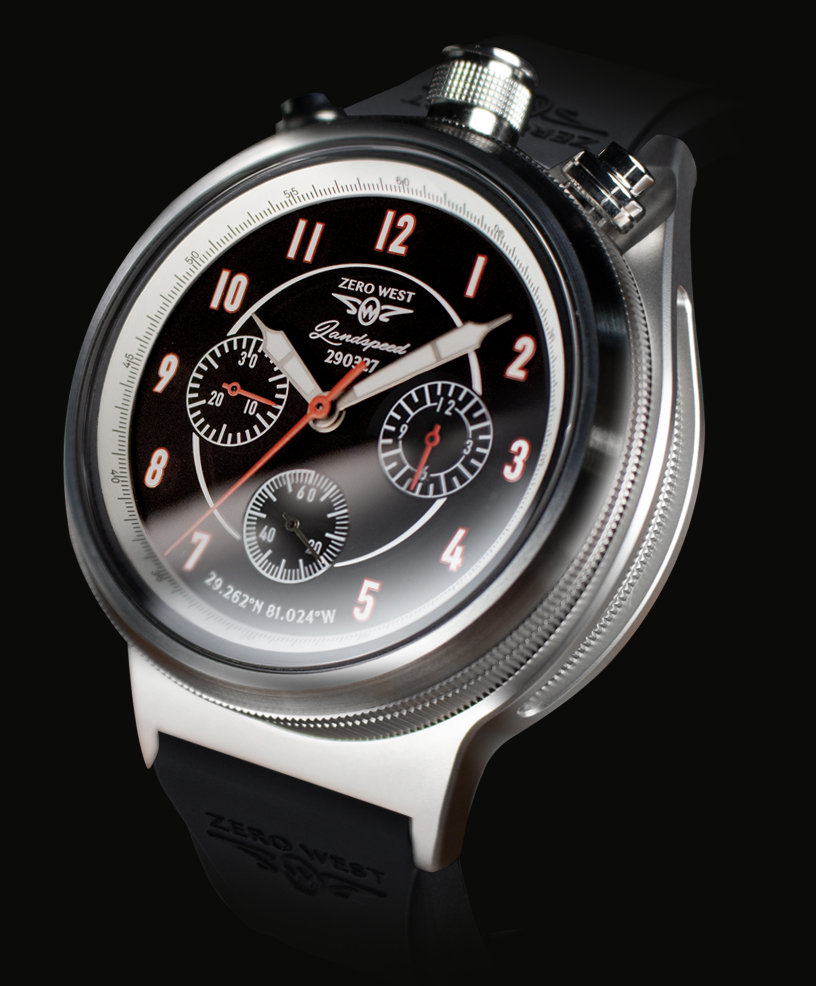Design Attributes
-
Latitude and Longitude reference Daytona Beach
-
Date code references the Sunbeam land speed record
-
1920’s period dial and hand design
- Exhibition watch back with custom rotor
-
Matt silver stopwatch cradle emulates vintage dashboard fixing
Case
-
44mm diameter body in 316L stainless steel billet and finished in matt silver with straight barrel knurl and brushed top chamfer
-
Backplate and lugs are billet machined from a single piece of 316L stainless steel and matt finished. The exhibition window displays an diamond-turned aluminium insert with engraved serial number under a reverse printed sapphire crystal.
Winding Crown and Pushers
- Main Crown: Screw lock & sprung oversize straight diamond knurled and dome topped crown in polished 316L stainless steel with triple seal technology
- Chronograph Pushers: Sprung & double sealed pusher at 11 o’ clock (start/stop red polished) & 1 o’clock (reset silver polished)
Crystals
- Front: Custom double curved domed sapphire glass with blue AR coating on the internal surface
Movement
- Valjoux 7750 (decorated with custom rotor)
- 28,800vph
- 25 jewels
- Self-winding ball bearing rotor
- Power reserve ~48 hours
- Water resistance: 10ATM (100m) 100% tested
Dial
-
Black enamel over brass substrate with over printed vintage dialnumerals highlighted in Super Luminova X1 luminous pigment
- Sweep seconds sub-dial & minute & hour Chronograph sub-dials
- Steel satin dial ring with 0.2 second resolution indexes
Hands
- Matt steel with inset SuperLuminova X1 luminous pigment
- Red Chronograph function hands
Dimensions
- 44mm diameter
- 15.7mm thick
- 22mm lug width
- 52.5mm lug to lug pin spacing
- Weight 150g including strap
Strap
- 22/20mm Zero West custom Military and aerospace grade cross-linked fluoroelastomer rubber.
- 1 fixed and 1 sliding keeper
- Reverse sculptured relief
- Matt finish
- Matt silver stainless steel buckle with
engraved ZW logo
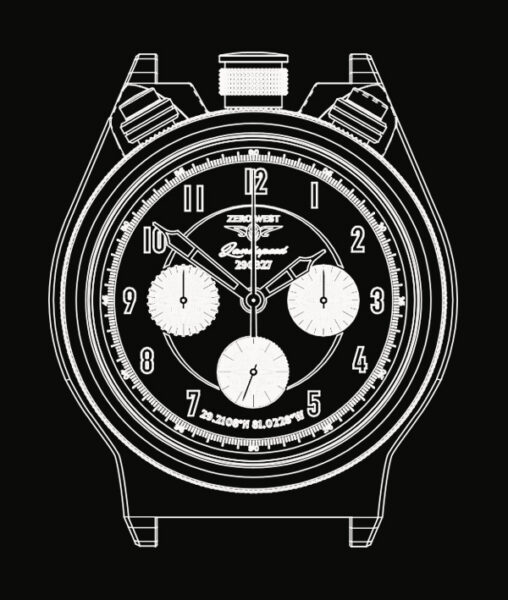
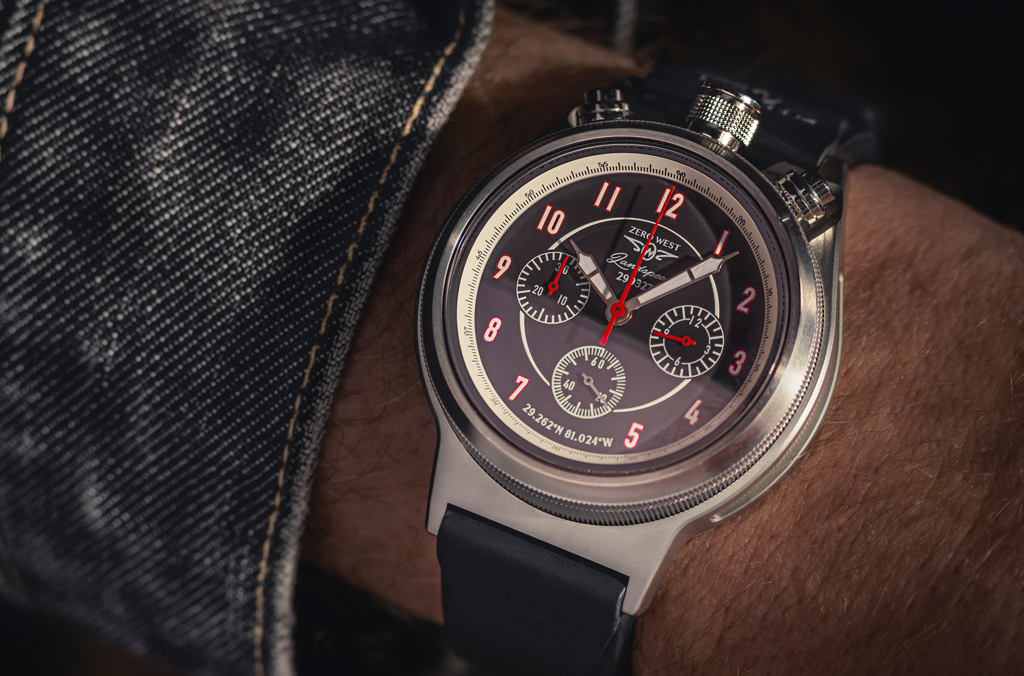
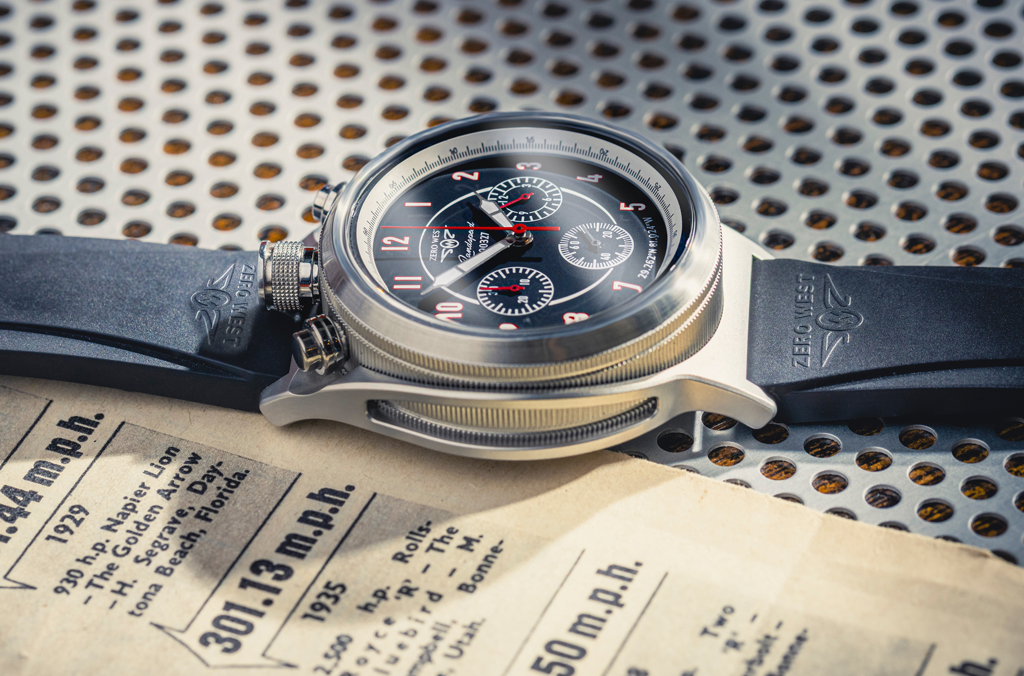
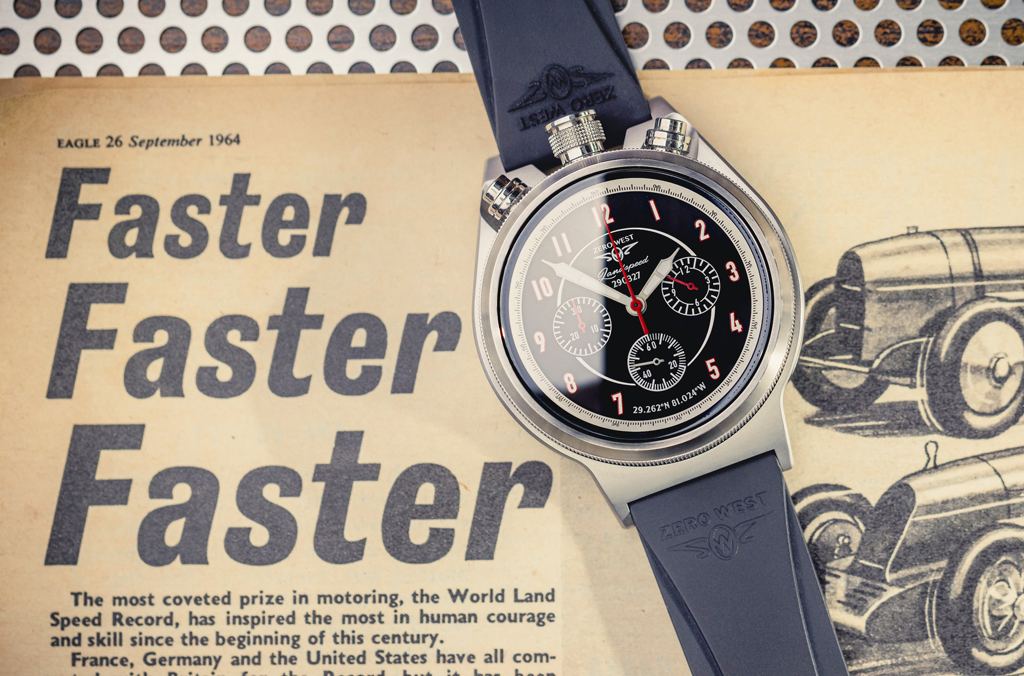
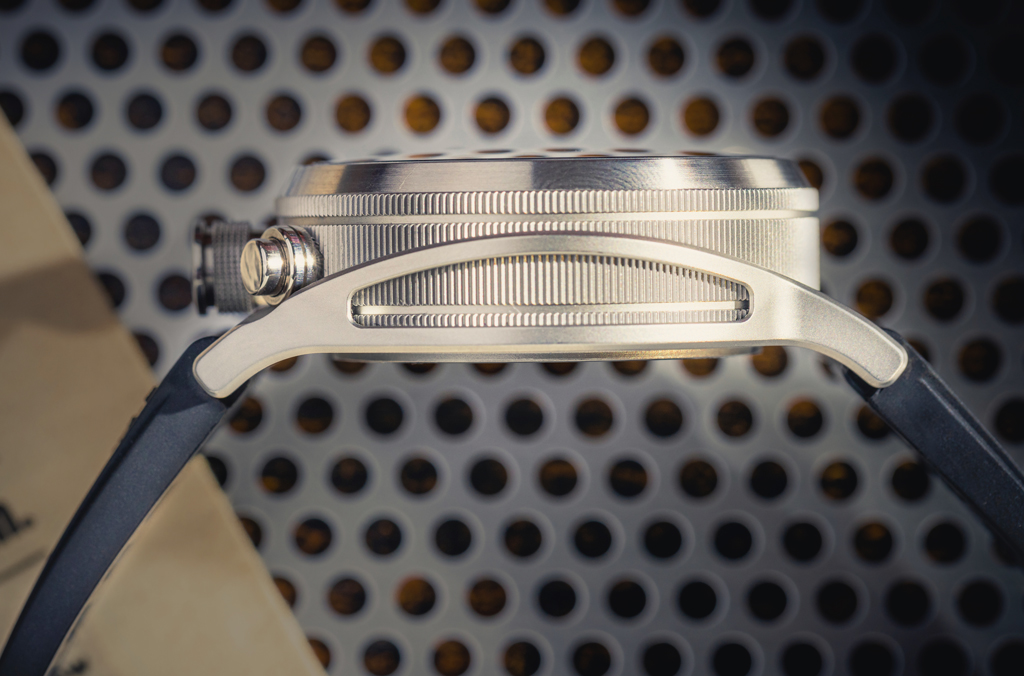
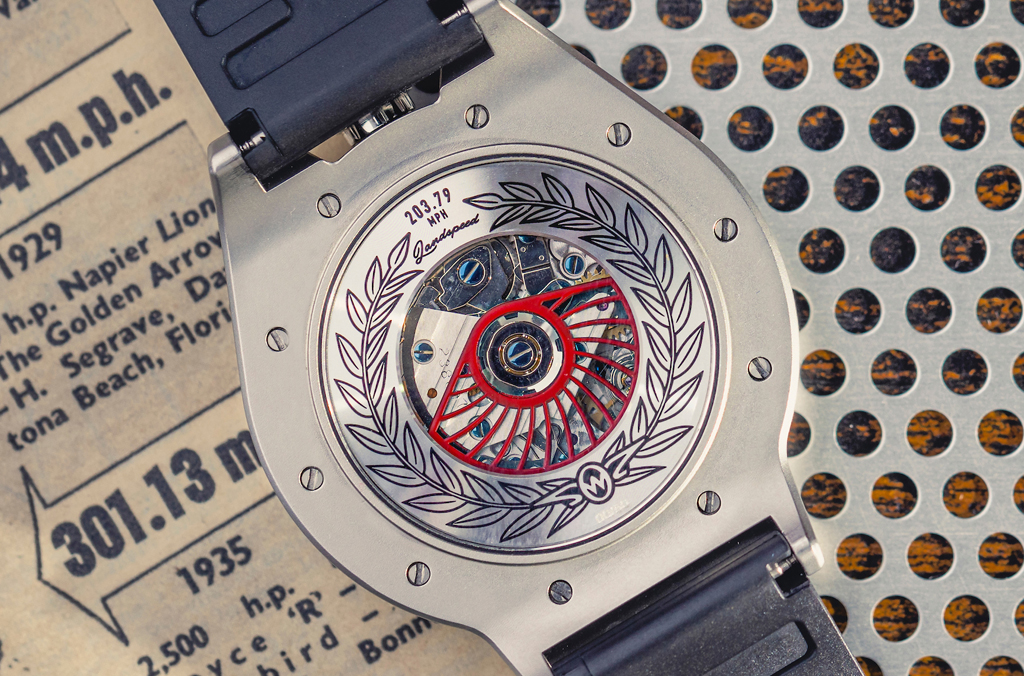
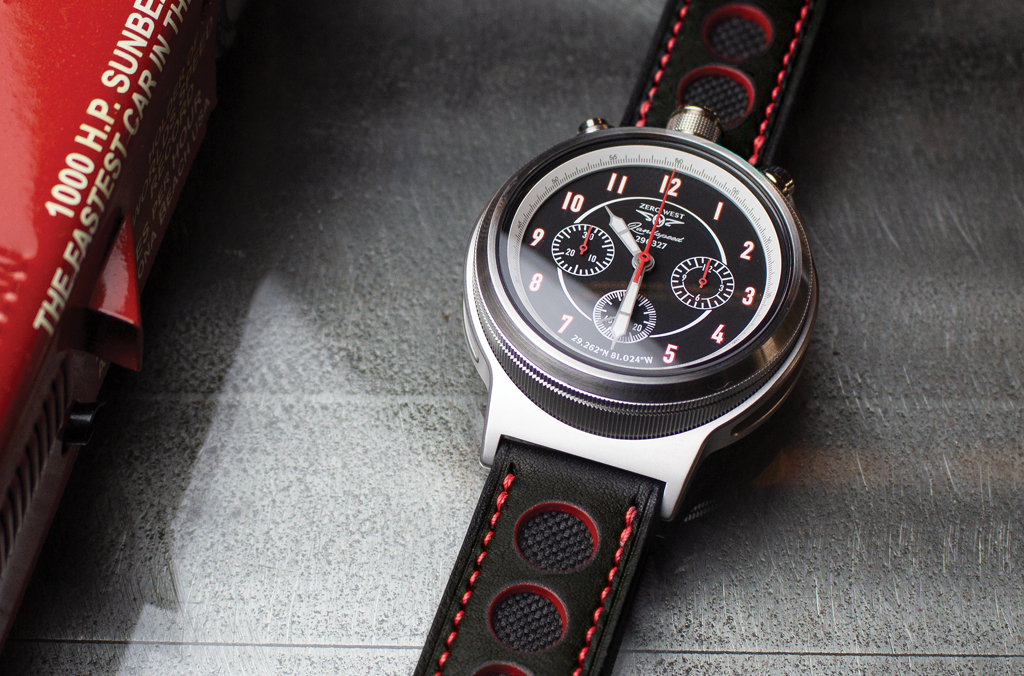
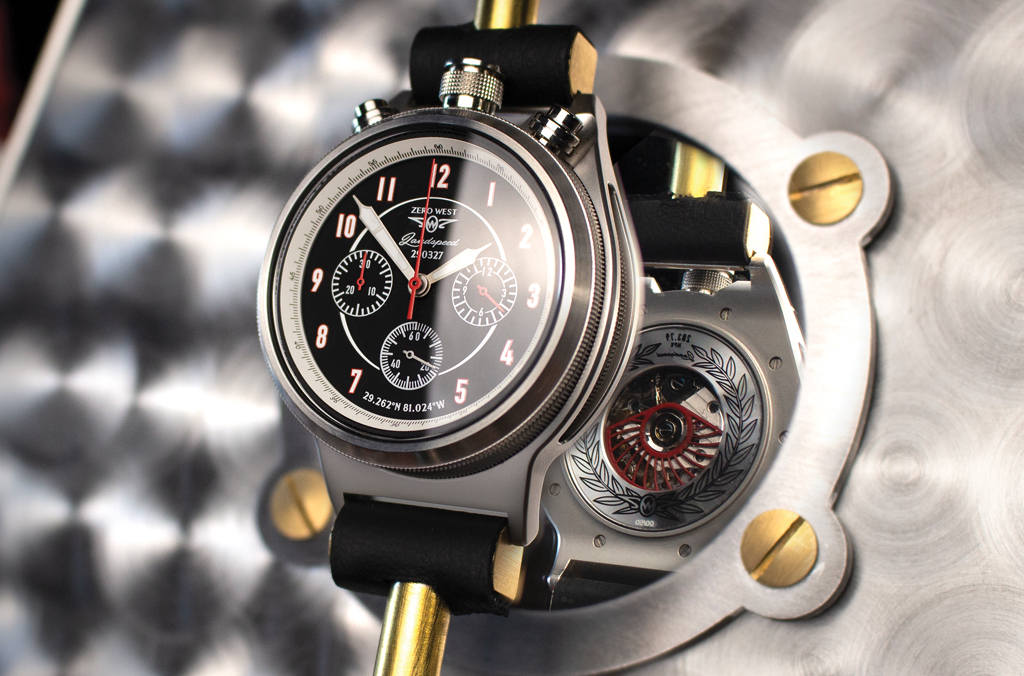
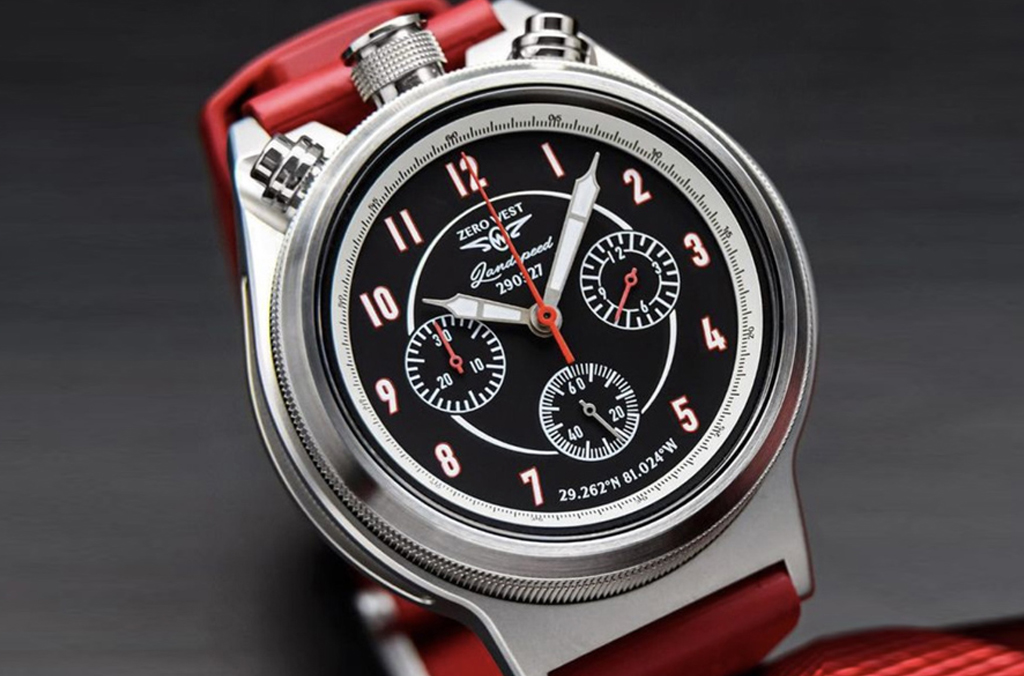
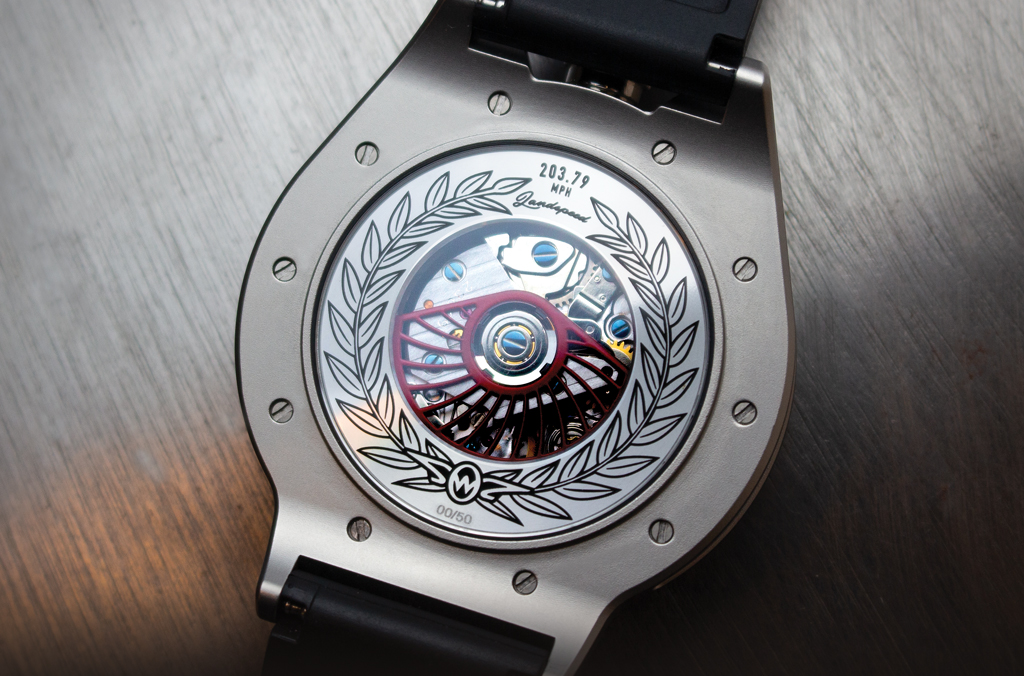
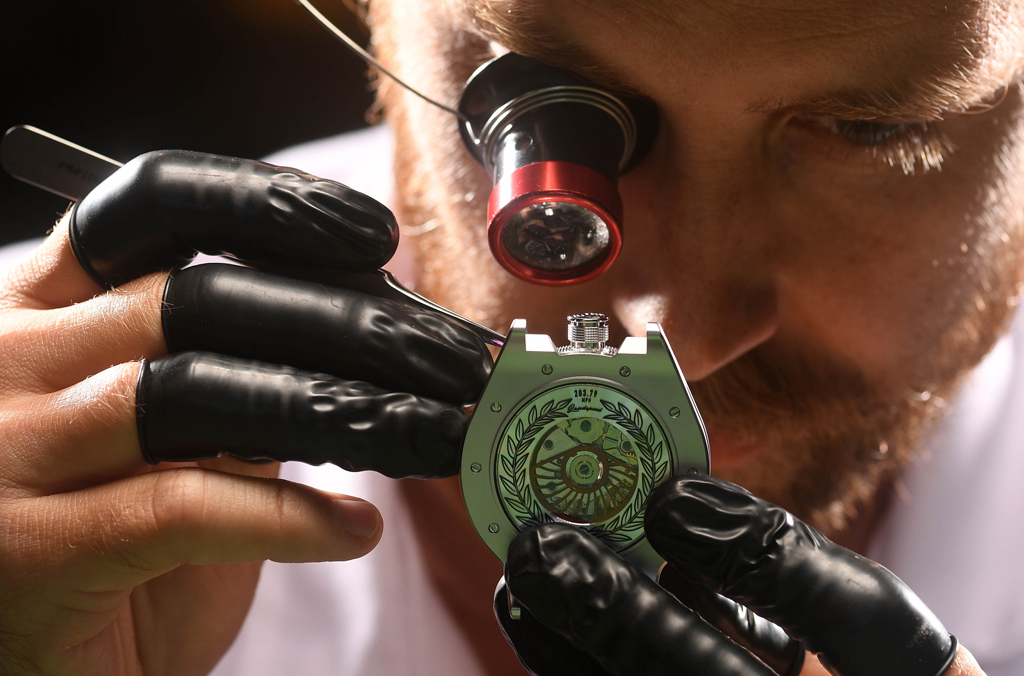

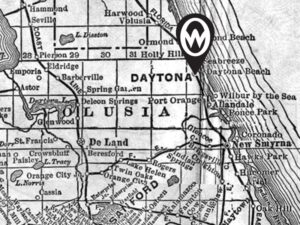
Ever since the first motorcar took to the road, man has wanted to make it go faster. It’s a human trait, a lust for adrenaline, a thirst for competition. This compulsion to race cars has taken many forms but the ultimate goal is to be the fastest person on Earth, whether that was is in the air, on water or land.
The 1920’s saw great international competition in land-speed record attempts. The mechanised world was developing fast after the horrors of WW1 which included the advancement of the internal combustion engine and the motor industry and a fierce international rivalry existed for holding the much coveted land-speed record. During the 1920’s the land-speed goal was to break the 200mph barrier and during that decade, the land-speed record was broken no fewer than eleven times.
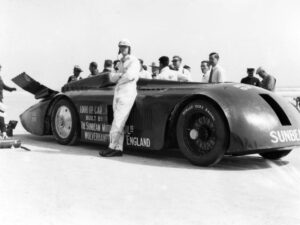
The elusive 200mph barrier was finally broken on 29th March 1927 at Daytona Beach, USA, by an Englishman called Sir Henry Segrave, driving a British built Sunbeam car called “Mystery” aka Sunbeam 1000 hp. The speed recorded was 203.79 mph.
It was an incredible car built by the British Sunbeam Motorcar Company of Wolverhampton. A colossus at 24ft long, 8ft wide and weighing in at 4 tons it was clad in aluminium alloy and painted in a bright red livery. Two 22.4 litre V12 Sunbeam Matabele aero engines, synchronised and mounted in tandem powered the car, one in front and one behind the driver cockpit. Transmission was via a 3 speed gearbox, its final stage being twin chain direct drive to the rear wheels.
The record would not stand for long and was broken in February of the following year by another Englishman, Sir Malcolm Campbell, at a speed of 206.956 mph.
Seagrave however went on to retain the record again in 1929 in a car called Golden Arrow at a speed of 231.446 mph, and once again Britain’s dominance in leading the world in engineering and setting new land speed records was upheld.
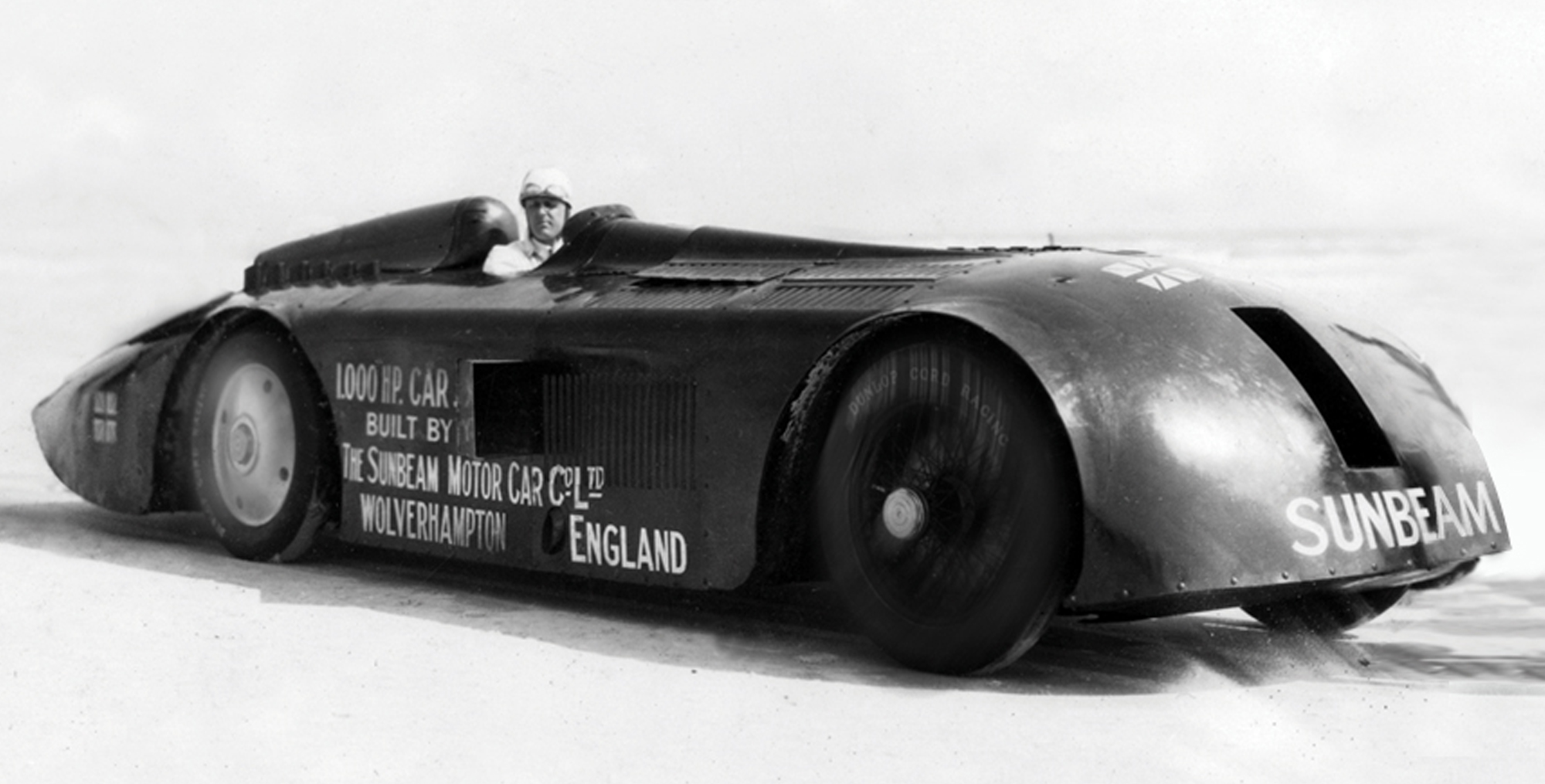
TIME: 29/03/1927 – PLACE: 29.262°N – 81.024°W
